Updated 6/16/16. Photon OS 1.0 now works out of the box –> https://vmware.github.io/photon/ This guide is to help you create a blueprint in vRA/vCAC for VMware’s new Photon operating system. Note that Photon is currently a technical preview so there is still quite a bit of development yet to happen. As you may have discovered already, one thing missing is the ability to use vCenter guest customization. This is planned for future releases. Luckily Photon does support the openVMtools package. This allows you to use vRealize Orchestrator (vRO) to run scripts in the guest. In this guide I am using vRO to extend vRealize Automation to customize the Photon guest using custom properties.
Pre-Reqs
- at least a minimal installation of vRalize Automation 6.x see my guide here
- A static network profile and reservation that you have already tested other OS blueprints and and know it works.
- You will need to use Photon TP1- Download the ISO here
- Full installation of a Photon VM installed in vCenter with openvmtools installed see guide here
- vRA to vRO extensibility installed and configured see my guide here
- A quite place where you will not be interrupted
Version
1.0 First release
1.2 Added link to Photon TP1 as this guide has known issues with TP2
1.3 Updated workflows to wait for tools to start as there was a reported timing issue.
Installation
First we will need to create a script in the Photon guest that we will call from vRO with inputs. Power on your Photon VM and login. Then change directory to / and enter the command vi customizeos.sh and press enter
rm /etc/hostname echo $1 >> /etc/hostname rm /etc/systemd/network/10-dhcp-eth0.network echo [Match] >> /etc/systemd/network/10-static-eth0.network echo Name=eth0 >> /etc/systemd/network/10-static-eth0.network echo [Network] >> /etc/systemd/network/10-static-eth0.network echo Address=$2 >> /etc/systemd/network/10-static-eth0.network echo Gateway=$3 >> /etc/systemd/network/10-static-eth0.network echo DNS=$5 >> /etc/systemd/network/10-static-eth0.network echo Domains=$4 >> /etc/systemd/network/10-static-eth0.network rm /etc/systemd/resolved.conf rm /etc/docker/key.json echo DNS=$5 >> /etc/systemd/resolved.conf echo LLMNR=yes >> /etc/systemd/resolved.conf
Now press esc and hold Shift and press ZZ to save it.
Now login to vRA as an administrator and go to the infrastructure tab, then computer resources, compute resources then hover over your vCenter Cluster and click
Now download the vRO package I created. It contains the workflow that will customize Photon as part of the build process. Remember it is in a ZIP file, you will need to unzip it before the next step.
Now change to Run and navigate to the PhotonvRACustomizeGuest workflow and right click and select edit
Go to the general Tab and change the vmUsername and vmPassword to whatever you set it when you deployed you Photon VM
Login to vRA as cloudadmin and click the infrastructure tab, navigate to Blueprints then build profiles and create the following new build profile
Go to the Build information Tab and Enter information as shown, navigating to your Photon VM and the snapshot we created earlier.
Notice that the Customization spec is blank. This is because Photon does not yet support vCenter Guest customization.
Now go to Properties Tab and enter the following
Photon networking requires the subnet type as a /24 you will need to enter this to match the subnet mask in your network profile.

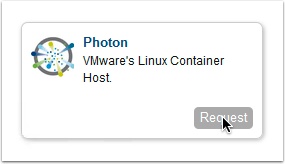


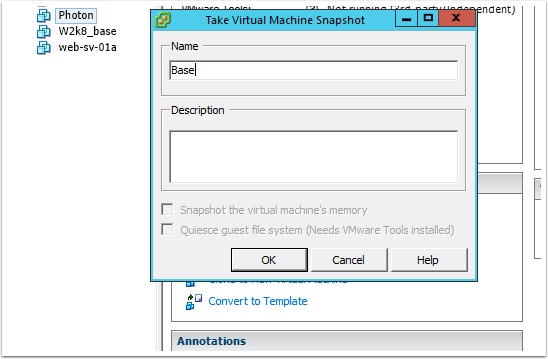
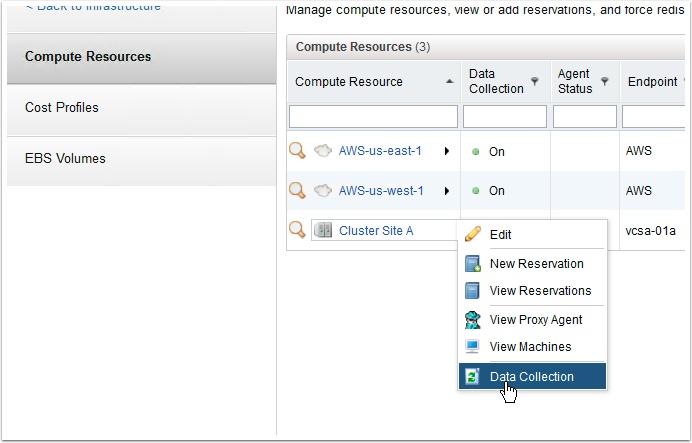



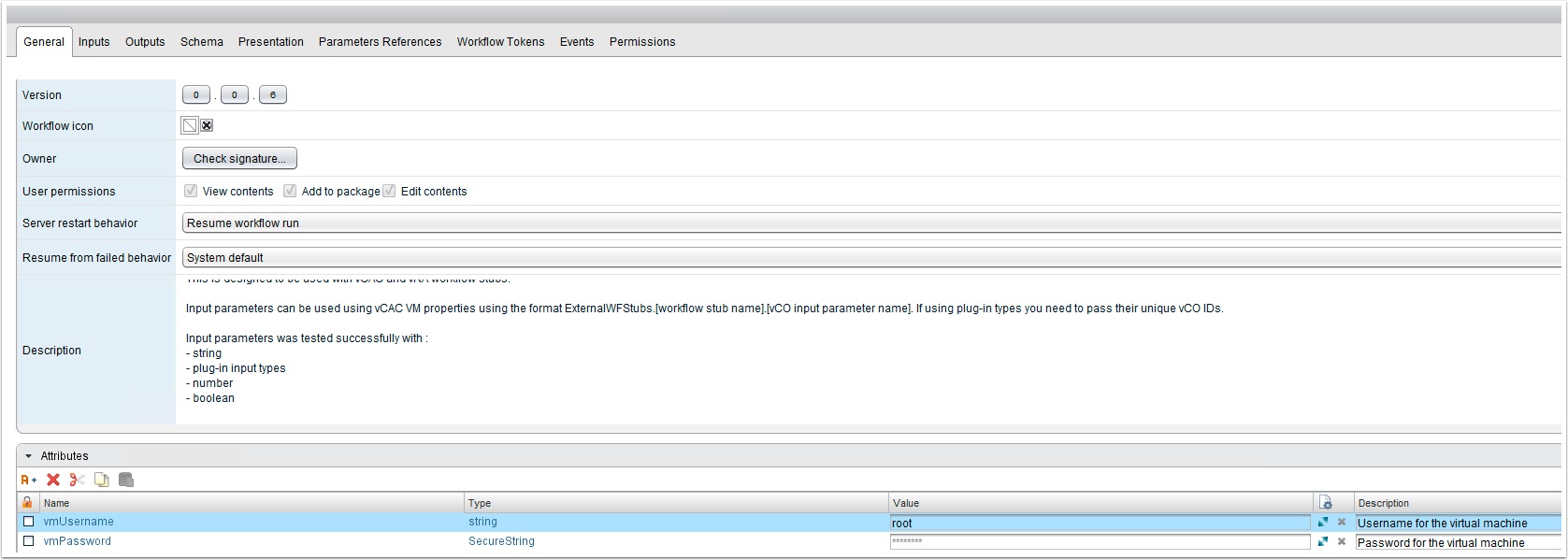
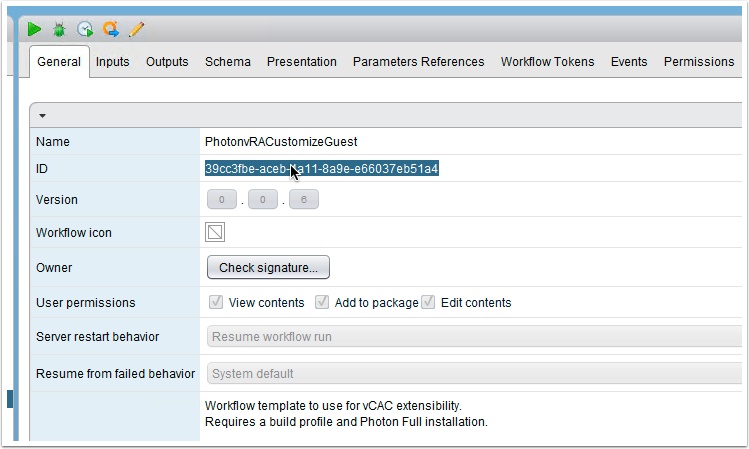


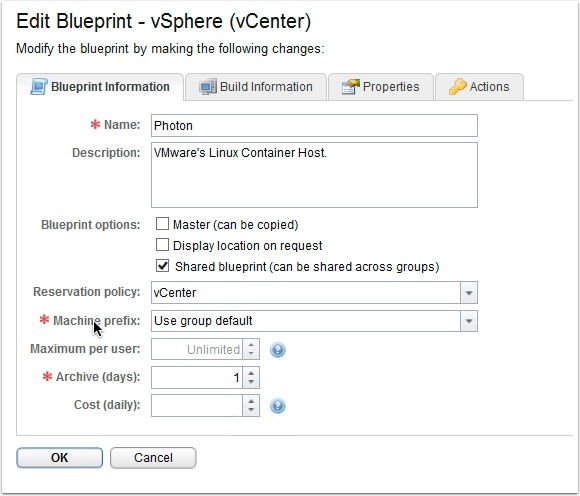







Pingback: Container as a service with vRA/vCAC and Project Photon | VMtoCloud.com
Pingback: Apple Time Capsule as a Service with vRA/vCAC and VMware Photon | VMtoCloud.com
Ryan,
Have you sen any issues with using vRO to authenticate to Photon in TP2? With TP2 I can’t seem to get any of the Guest Operations to authenticate to the guest.
-Sid
Yes, there is known issue with TP2. I would continue to use TP1. If you need newer version of Docker just type yum update docker at command line. Be sure your Photon VM is connected to internet.
Have you updated this for vRA 7.1?